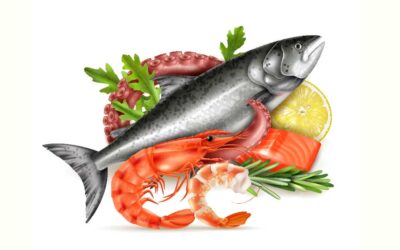
Exporting seafood is a great way to grow your business and reach new markets. But international trade also comes with risks. These include currency changes, transport delays, rule changes, and health or safety problems. A resilient export business is one that can survive and grow even when things go wrong.
This article will show you how to build a strong and flexible seafood export business. You will learn how to manage risks, protect your products, and prepare for the future.
What Does Resilience Mean in Seafood Export?
Resilience means your business can continue working and growing, even when it faces problems. These can come from outside, like bad weather or a port strike, or inside, like poor planning or a shortage of staff.
A resilient seafood export business can:
- Keep operations going during challenges
- Deliver products on time and in good condition
- Protect income and profits
- Change plans quickly when needed
- Stay legal and trusted in the market
Being resilient helps your business stay safe and grow over time.
Understand the Risks in Exporting Seafood
To protect your business, you must first understand the common risks in seafood export. These risks can affect your production, transport, legal compliance, or customer relationships.
Common risks include:
- Delays in shipping or cold chain failures
- Disease outbreaks in farms or fishing areas
- Exchange rate changes that affect profits
- New import rules in the destination country
- Rejection of goods due to poor quality or missing documents
- Political issues or trade restrictions
- Natural disasters like floods, storms, or earthquakes
- Theft, cyberattacks, or product tampering
Not all risks can be avoided, but many can be managed with good planning.
Plan for Supply Chain Disruptions
Seafood must be kept fresh and cold while moving from the farm to the buyer. If the supply chain breaks, products can spoil and be rejected.
To build a strong supply chain:
- Work with reliable logistics companies
- Use refrigerated containers and backup cold storage
- Have contracts with multiple transport providers
- Track shipments in real time if possible
- Keep extra stock of important supplies
- Prepare an emergency plan for delays or loss
Build good relationships with suppliers, exporters, and customs agents. They can help you solve problems quickly.
Manage Currency and Financial Risks
When selling overseas, currency changes can affect how much money you make. If your costs are in one currency and your payments are in another, profits can go up or down suddenly.
To manage this risk:
- Use forward contracts to lock in exchange rates
- Set prices with room for small currency changes
- Work with banks or financial advisors to understand risks
- Get paid in your local currency if possible
- Use simple accounting tools to track profits and losses
Managing money well helps you avoid surprises and stay profitable.
Comply With Trade and Food Safety Laws
Every country has its own rules for imported seafood. If your product does not follow these rules, it may be delayed, rejected, or destroyed.
To stay compliant:
- Learn the import laws of each country you export to
- Use correct labelling with country of origin, species, and safety information
- Get required documents like health certificates and certificates of origin
- Follow traceability and hygiene rules from farm to factory
- Keep up to date with changes in trade or food safety laws
- Train staff in handling, packaging, and export processes
Good compliance protects your reputation and reduces the chance of costly mistakes.
Protect Your Brand and Intellectual Property
Your brand is the identity of your seafood business. It includes your name, logo, product labels, and packaging design. If someone copies your brand or product, it can hurt your business.
To protect your brand:
- Register your trademark in countries where you sell
- Use unique and clear packaging designs
- Apply for copyrights or patents if needed
- Avoid sharing private recipes or processes without contracts
- Monitor for fake or copied products online
Buyers are more likely to trust and remember a brand that is safe and professional.
Diversify Your Export Markets
If you sell all your seafood to one country, a small change in that country can damage your business. For example, a new import rule or political event can stop sales overnight.
To reduce this risk:
- Sell to several countries instead of just one
- Explore new or emerging markets with growing demand
- Adapt your product to fit different cultures or preferences
- Use trade shows and food expos to meet new buyers
- Build long-term relationships in multiple markets
Diversifying your markets helps you stay stable and grow even if one market changes.
Build Strong Relationships With Buyers
Buyers want to work with exporters they can trust. If you treat them well and deliver good products on time, they will keep buying from you even during hard times.
To build trust with buyers:
- Communicate clearly and respond quickly
- Be honest about problems or delays
- Send samples and updates regularly
- Offer flexibility with orders when possible
- Ask for feedback and improve your product
A loyal buyer is one of the best protections in export trade.
Get Insurance for Your Business
Insurance can protect you from big losses if something goes wrong. It can cover damage, delay, theft, or even legal costs in some cases.
Types of useful insurance include:
- Marine cargo insurance to protect your product during transport
- Business interruption insurance for unexpected shutdowns
- Product liability insurance in case your seafood causes illness
- Trade credit insurance to protect against unpaid invoices
Talk to insurance providers that understand the seafood and export business.
Use Technology to Improve Efficiency
Technology can help you manage risks, save money, and improve traceability. Even small businesses can benefit from simple tools.
Helpful technologies include:
- Digital temperature monitors in cold storage
- Mobile apps for inventory and shipment tracking
- Online traceability systems to meet export standards
- Cloud-based accounting and planning software
- Email and messaging tools for fast communication
Start with what you need most and add more tools as your business grows.
Train Your Team for Growth and Crisis Management
A good team is the heart of a strong business. If your workers understand their jobs and how to handle problems, your business will be more stable.
Ways to build a strong team:
- Train workers in hygiene, safety, and quality control
- Teach staff about export documents and laws
- Assign roles clearly and have a chain of command
- Practice emergency drills for spills, delays, or illness
- Create a plan for how to work during busy or crisis periods
A trained team can keep your business running even when the owner is not there.
Monitor Global Trends and Market Changes
The seafood market is always changing. New trends, health concerns, or policy changes can affect demand. If you watch what is happening, you can adapt before problems happen.
Watch for trends like:
- Changes in consumer tastes or seafood preferences
- Demand for sustainability or eco-friendly practices
- New health rules or safety concerns
- Political events or trade deals
- Climate change impacts on fish farming or fishing areas
Stay informed by reading industry news, joining trade groups, or attending events.
Prepare a Business Continuity Plan
A business continuity plan is a written guide that explains what to do if something goes wrong. It helps you act quickly and reduce damage.
Your plan should include:
- A list of possible risks to your business
- Steps to take if each risk happens
- Emergency contacts for suppliers, transport, and buyers
- Backup plans for power, water, and cold storage
- Roles and responsibilities for each staff member
Update your plan each year and train your team to follow it.
Conclusion: Strength Today, Success Tomorrow
Building a resilient seafood export business takes time, planning, and the right people. But the rewards are worth it. When you are ready for problems, your business can keep growing no matter what challenges come.
Key ways to build resilience:
- Know your risks and prepare for them
- Stay compliant with export rules
- Protect your supply chain and cold storage
- Manage finances, currency, and insurance
- Build strong buyer and team relationships
- Use technology and good planning
- Stay informed and ready to adapt
With a strong foundation, your seafood business can succeed in local and global markets for years to come.
Let me know if you’d like this article formatted as a printable guide, business checklist, or training handout for your team or partners



